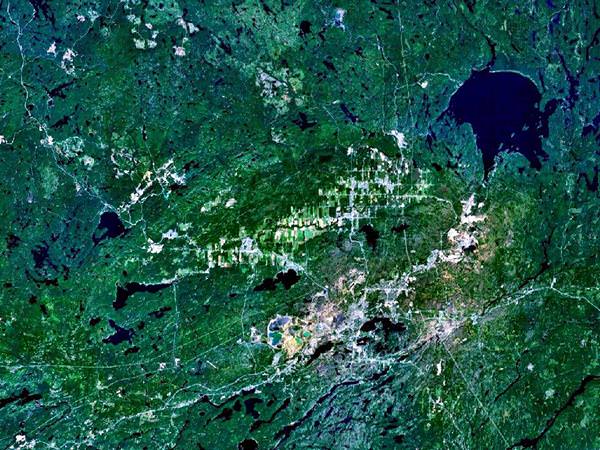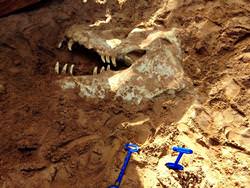Space bombers. Largest Meteorite Craters on Earth
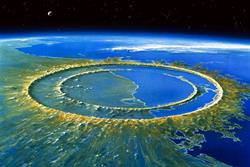
Sudbury Crater, Canada
In Canada, Ontario, there is one of the largest impact craters of the planet called Sudbury. The diameter of the crater is about 250 km, so its majesty can be fully appreciated only while watching images taken by a satellite. The crater has an elliptical shape. A part of the basin is filled with a lake of about 8 km in diameter. The scale of the meteorite crater is amazing, it’s about 65 km long and 25 km wide. The depth of structure is about 14 km.
However, the majority of scientists subscribe to a meteoritic origin of the Sudbury structure. Currently, this region is of great interest not only for a research, but also for an industry. Large deposits of nickel and copper were discovered at the perimeter. Today, the nickel production in Sudbury is about 10% of the world’s total. A lot of mining companies opened there in the last hundred years. More than 160 000 people constantly live in an industrial area.  Next - Popigai Crater
Next - Popigai Crater
Popigai Crater, Russia
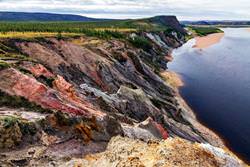
Popigai Crater, Russia
Description
The other largest crater is situated in Russia, Taymyr Autonomous District. Popigai crater is about 100 km in diameter. It is widely known as one of the largest diamond mines in the world. The crater has formed in the Eocene epoch, 35 million years ago. The structure itself was found recently, in 1946. The hypothesis that the crater has been formed by an impact of a large fireball was presented much later, in 1970. Description
Vredefort Crater, South Africa
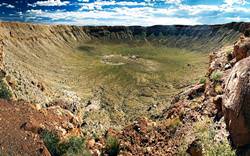
Vredefort Crater, South Africa
Description
The largest impact crater of the planet is in South Africa. Vredefort is a landmark of world importance; in 2005 it was added to the UNESCO World Heritage Site list. The diameter of the crater is 380 km. Currently, there is the city of the same name here. The crater has formed after a collision of Earth and the asteroid that was more than 10 km in diameter as scientists assume. Description
Manicouagan Crater, Canada
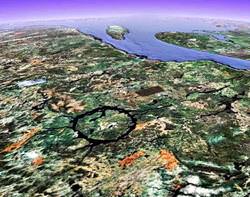
Manicouagan Crater, Canada
Description
Canada is rich in unique impact craters. The world famous Manicouagan crater is situated in Quebec. The diameter of the structure is 100 km. The crater was formed by an impact of the asteroid that could be up to 5 km large. The collision happened more than 200 million years ago. According to scientists, this disaster could lead to the complete extermination of Triassic-Jurassic animals. Description
Chicxulub Crater, Mexico
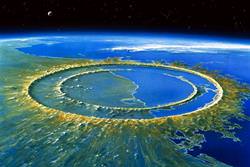
Chicxulub Crater, Mexico
Description
Chicxulub crater in Mexico, Yucatan Peninsula, was formed as a result of a meteorite crush about 65 million years ago. Chicxulub is quite young in comparison with other large craters of our planet. According to scientists, this catastrophe could have been the cause of the partial or complete extinction of dinosaurs. The disaster had a huge scale. Researchers suggest that a fallen meteorite could have caused a tsunami with waves up to 100 meters high. Description
Aorounga Crater, Chad
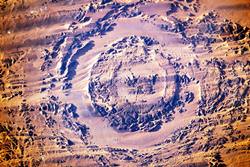
Aorounga Crater, Chad
Description
The famous Aorounga crater, which is considered a unique structure, is situated in Africa, in the Republic of Chad. The thing is that Aorounga, most likely, is a triple structure formed as a result of multiple collisions of the planet and celestial bodies. The structure of the crater can only be seen on detailed radar images made by a satellite. Description
Barringer Crater, USA
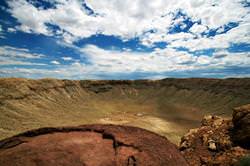
Barringer Crater, USA
Description
Barringer Crater located in the United States, Arizona, is one of the preserved evidences of a collision with a celestial body. The diameter of the crater is relatively small and is about 1.2 km long and 175 meters deep. The fact that even these days the crater is clearly shaped is very easy to explain. The structure was formed quite recently, only 50 000 years ago. Scientists were able to found that a large iron meteorite of about 50 meters in diameter has fallen there. Description
Wolfe Creek Crater, Australia
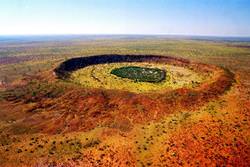
Wolfe Creek Crater, Australia
Description
Travelers who want to see another well-preserved meteorite crater, should go to the North and Central Australia. Here, among the desert landscapes, they will found the stunning Wolfe Creek crater formed about 300 000 years ago. The structure is about 880 meters in diameter and up to 60 meters deep. The crater is located among vast desert lands. The structure of the crater was strongly influenced by dune sand, but still retains a sharp-cut form. Description
Karakul Crater, Tajikistan
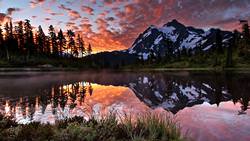
Karakul Crater, Tajikistan
Description
A large mountain crater, Karakul, is situated in Tajikistan. It’s incredibly attractive from a research point of view. The diameter of the crater is about 45 kilometers. The structure was formed about 10 million years ago. The main feature of the crater is its location, 6 000 meters above sea level. So, it can be considered the highest meteorite crater in the world. Description
Bosumtwi Crater, Ghana
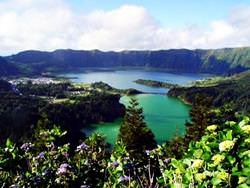
Bosumtwi Crater, Ghana
Description
Bosumtwi located in Ghana can be mentioned among the most picturesque meteorite craters of the planet. This structure was formed by a meteorite that collided with the planet about 1.3 million years ago. The diameter of the bowl is 10.5 km. Currently, the crater is filled with water. Bosumtwi lake is considered one of the main natural attractions of Ghana. Description
Steinheimer Becken, Germany
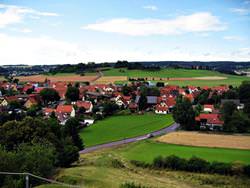
Steinheimer Becken, Germany
Description
Steinheim crater located in the community of Steinheim am Albuch is open for curious tourists in Germany. While strolling through the territory, admiring the green meadows and fabulously beautiful houses of local residents, it’s difficult to assume that at this moment you are in the middle of a huge meteorite crater. The structure is quite large, its diameter is about 3.8 km. Just standing on the hill, you can fully appreciate a uniqueness of the landscape. Description
Rochechouart Crater, France
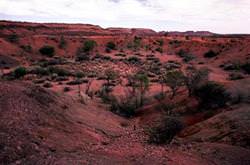
Rochechouart Crater, France
Description
France also has craters that deserve attention of those fond of unusual excursions. The most famous among them is the Rochechouart crater. The region of the same name began to attract the attention of scientists in the late 18th century. People showed interest to the obscure rocky formation, which was actively mined. That mine was used for the construction of castles. One of these castles, Rochechouart, has preserved to this day. Description
Kara Crater, Russia
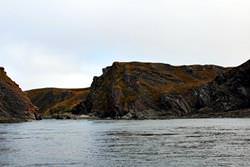
Kara Crater, Russia
Description
The Kara crater is situated in Russia, Nenetsia. This structure is the result of the large-scale cosmic catastrophe that occurred about 70 million years ago. The land collided with a huge meteorite, after which a huge crater of more than 65 km in diameter was formed. As for the more specific characteristics of the crater topography, that's an elliptical cavity open to the Kara Sea. Description
Araguainha Crater, Brazil
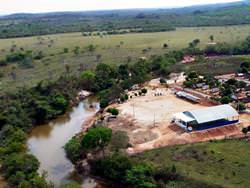
Araguainha Crater, Brazil
Description
The largest impact crater in Brazil is located on the border of the states of Goias and Mato Grosso. The Araguainha Crater was formed over 254 million years ago. According to scientists, there was a small sea in the area, where the meteorite stroke. Many interesting theories about mass extinctions relate to the fall of the Araguainha meteorite. It is likely, that many species of animals and plants really ceased to exist as a result of a collision of a meteorite and the Earth. Description
Shoemaker Crater, Australia
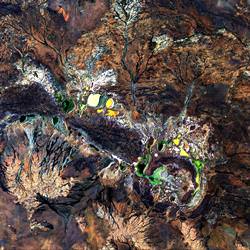
Shoemaker Crater, Australia
Description
The Shoemaker crater located in Australia was formed over 1 630 million years ago. It's among the largest and most amazing impact craters of the planet. The unusual geological structure formed as a ring has been discovered by researchers as early as the mid-20th century. In 1974, the first hypothesis about its meteoric origin has been put forward. The crater was named after the famous American geologist, Eugene Shoemaker, who was the founder of the special scientific field, astrogeology. Description
Popular cities

Bath
60 hotels
60 hotels

Calgary
57 hotels
57 hotels

Famagusta
62 hotels
62 hotels

Hua Hin
111 hotels
111 hotels

Leipzig
80 hotels
80 hotels

Mestre
58 hotels
58 hotels

Palermo
69 hotels
69 hotels

Rome
1178 hotels
1178 hotels

Stockholm
111 hotels
111 hotels

Wroclaw
100 hotels
100 hotels
Largest Meteorite Craters on Earth - interactive map
OrangeSmile.com - online travel reservation expert providing reliable car rental and hotel booking services. We feature more than 25.000 destinations with 12.000 rental offices and 200.000 hotels worldwide.
Secure Server




OrangeSmile B.V. - Hotel Booking Worldwide
Head office: Weegschaalstraat 3
Eindhoven,
5632 CW
Netherlands
+31 40 40 150 44
Copyright © 2002 -
OrangeSmile Tours B.V. | OrangeSmile.com | Under the direction and management of IVRA Holding B.V. - Registered at Kamer van Koophandel (KvK), The Netherlands No. 17237018


